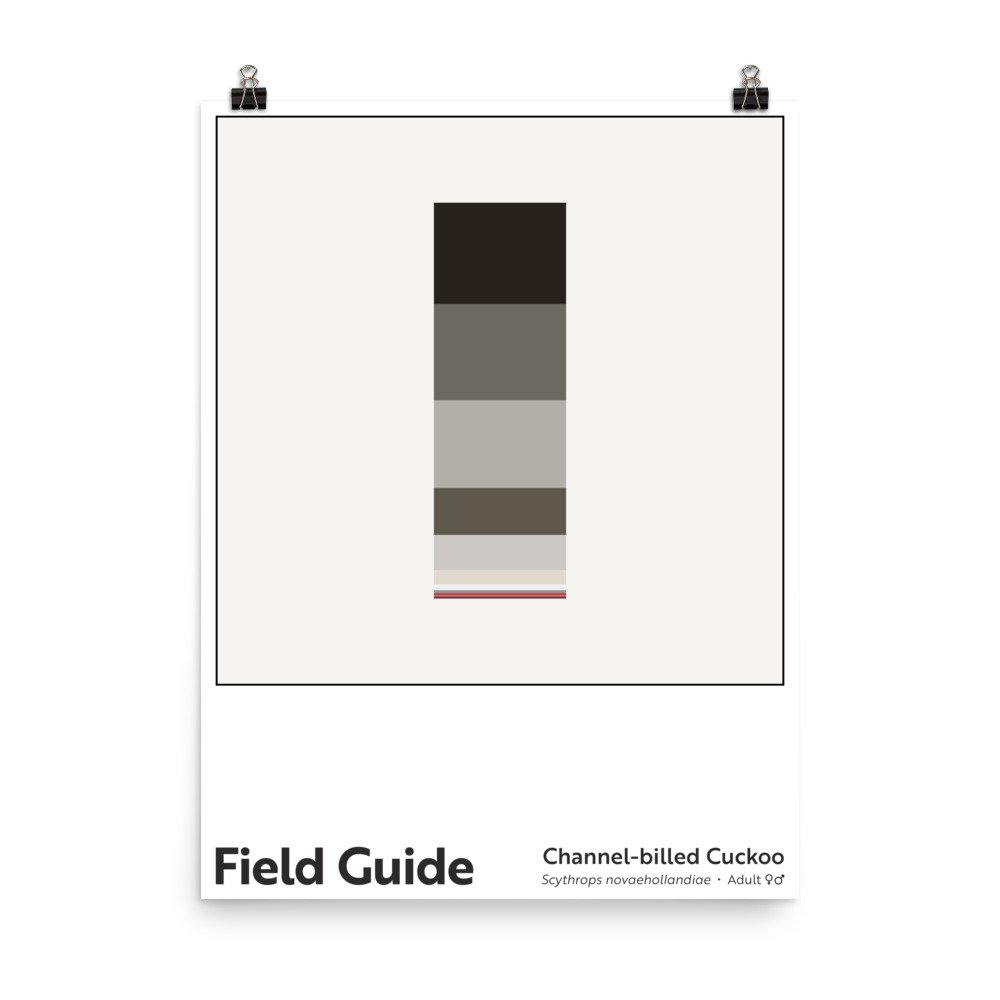Field Guide : Channel-billed Cuckoo
Field Guide : Channel-billed Cuckoo
Unlimited edition. 18 x 24 inch, museum-quality poster on matte paper.
The channel-billed cuckoo is found on Papua New Guinea, Australia, and some Indonesian islands. The scientific binomial, Scythrops novaehollandiae, translates as “angry-faced New Hollander.” The first part of that name is a reference to the crimson, madder, and pink colors of the bird’s iris and extensive orbital ring; the second part is geographical, as New Holland was once the name for Australia. Interestingly, while the red coloration jumps out when looking at the actual bird, it represents a relatively small percentage of the bird’s color column – our perception can deceive us, something we’d all do well to remember when we’re feeling especially “angry-faced.”
There is very little sexual dimorphism in the channel-billed cuckoo – the difference is mostly a matter of bill size (the female’s is a little smaller) and belly plumage (the female’s is slightly paler) – and after studying images of both sexes carefully, I decided to create a unisex color column. The male and female are believed to form pair bonds that last for one breeding season.
Their breeding labors, though, are quite different from most birds. Not only is the species the world’s largest cuckoo, it’s also the world’s largest “brood parasite.” That means a female cuckoo doesn’t construct her own nest or raise her own young; instead, she lays her eggs in the nests of other bird species, often removing, cracking, or otherwise terminating any eggs the “host” has already laid. The male cuckoo will harass the host species on the nest until it (or they, if the male of the species helps defend the nest) pursues him; the female then slips into the unguarded nest and lays an egg. Most targeted birds don’t realize they’ve been had, and they brood the egg as if it were part of their own clutch. Once the baby cuckoo has hatched, it aggressively out-begs any surviving nest mates of the host species, even imitating its nest mate’s calls. It grows rapidly and either “evicts” its smaller nest mates from the nest or starves them by monopolizing the parental feedings. Curiously, the young cuckoos will eat whatever the host parent delivers in the way of food, but adult cuckoos are fruit focused, with a keen taste for figs. They will also eat insects and, less often, smaller birds and bird eggs.
Note: These archival poster prints feature rich, appealing colors. I encourage customers to take care in handling them until they are framed/protected for display; the darker colors on the matte paper can be scratched. They ship rolled, so customers need to flatten them before framing (or have their framer do so).
Charitable Sales Model: Whenever one of these poster prints is purchased, a charitable contribution equal to 10% of the print’s cost (or $3.60) is made to a nonprofit working to tackle environmental or social challenges. Read more about my charitable sales model here.

